Liposuction in Spain
Search and Compare the Best Clinics and Doctors at the Lowest Prices for Liposuction in Spain

Find the best clinics for Liposuction in Spain
With Medijump you can browse 55 facilities offering Liposuction procedures in Spain. The cheapest price available is $1,687 in Alicante. And for the cheapest price globally, prices start from $120 in Ukraine.
Liposuction in Alicante
Price: $ 1,687
Liposuction in Malaga
Price: $ 1,813
Ukraine offers the best prices Worldwide
Price: $ 120
From 4 verified reviews
Ana Martínez Contreras, 18 September 2020
Me operè con el doctor Antolín,por un problema de salud,ya que tenía un importante faldón abdominal.No tengo palabras para describir el excelente trabajo que tanto él como todo su equipo han hecho.Solo tengo palabras de agradecimiento hacia él,me ha cambiado totalmente la vida.Destacar su gran profesionalidad,así como el trato cercano y humano recibido.Muchísimas gracias por todo, es palpable cuando alguien pone el corazón en lo que hace.Recomendable 100% y un equipo inmejorable.
From 18 verified reviews
Monica Higuero, 31 May 2020
One of the best decisions I have ever made regarding my personal care. They recommended me to Dr. Granados a couple of years ago and since then only he treats me. For me, the doctor, and all the great professionals who work with him are like family.
From 30 verified reviews
Mariajose, 23 September 2020
Mi experiencia está siendo muy buena muy buen trato y muy profesionales volvere sin duda
From 104 verified reviews
Virginia Elena Carrero Planes, 22 September 2020
Tengo que decir que mi experiencia con el DR. Benito y su equipo ha sido excelente. .A pesar de la complejidad de mi situación el proceso operatorio se condujo perfectamente y ahora tengo la tranquilidad de saber que todo está bien y el resultado es armonioso y totalmente integrado en lo que soy yo. Si alguna vez volviera a precisar de su intervención sin duda me pondría en sus manos con plena confianza.
From 12 verified reviews
Luna Luna, 21 October 2019
It operated for me 19 years ago and all phenomenal
From 122 verified reviews
Juray Petrik, 20 June 2020
Very neat, clean, nice staff
From 48 verified reviews
Daniel Lloyd, 22 September 2020
Excelente experiencia en todos lo ámbitos, en mi familia varias operaciones, muy exitosas y mucha profesionalidad
From 133 verified reviews
Cristina Sanchez, 22 September 2020
Excellent facilities, qualified staff. It is my referral hospital for now and I am very happy with the services provided.
From 133 verified reviews
octavio sempere, 21 September 2020
para mi de lo mejor que hay y sobretodo muy buen servicio
From 135 verified reviews
Victoria García, 15 September 2020
THANK ALL THE ICU TEAM at the hospital for their professionalism of 10 and above all the humane treatment they have had with my father, which has been excellent. Companies are characterized by their quality certificates, this hospital especially for its involvement with patients, closeness and empathy. The relationship with the family in every way has also been ten. We have been informed of its evolution daily even being in the distance. The human certificate of more than 10 has been proven again. Our true gratitude to the García González family.
From 135 verified reviews
Victoria García, 07 September 2020
THANK ALL THE ICU TEAM at the hospital for their professionalism of 10 and above all the humane treatment they have had with my father, which has been excellent. Companies are characterized by their quality certificates, this hospital especially for its involvement with patients, closeness and empathy. The relationship with the family in every way has also been ten. We have been informed of its evolution daily even being in the distance. The human certificate of more than 10 has been proven again. Our true gratitude to the García González family.
Clinica Dr. Pedro Antolin - Alcoi, located in Calle Max Planck, Alicante, Spain offers patients Liposuction procedures among its total of 26 available procedures, across 1 different specialties. The cost of a Liposuction procedure starts from ฿76,800, whilst the national average price is approximately ฿92,119. All procedures and treatments are undertaken by the lead specialist at the Clinic, and they are accredited by The American Society for Aesthetic Plastic Surgery
Ocean Clinic, located in Calle del Mediterraneo, Marbella, Spain offers patients Liposuction procedures among its total of 51 available procedures, across 2 different specialties. The cost of a Liposuction procedure ranges from ฿96,000 to ฿307,200, whilst the national average price is approximately ฿92,119. There are many specialists available at the Clinic, with 6 in total, and they have multiple recognized accreditations, including: ISO 9001:2008IPRAS (International Confederation for Plastic Reconstructive & Aesthetic Surgery)
Mallorca Medical Group, located in Carrer de son Espanyolet, Mallorca, Spain offers patients Liposuction procedures among its total of 36 available procedures, across 5 different specialties. The cost of a Liposuction procedure ranges from £2,530 to £5,903, whilst the national average price is approximately £2,009. All procedures and treatments are undertaken by just a small team of specialists, with 3 in total at the Hospital, and they have multiple recognized accreditations, including: SECPRE - Sociedad Española de Cirugía Plástica, Reparadora y EstéticaRBSPS - Royal Belgian Society for Plastic Surgery
HealthCare Expert, located in Calle Especeria, Malaga, Spain offers patients Liposuction procedures among its total of 72 available procedures, across 20 different specialties. The cost of a Liposuction procedure starts from £1,423, whilst the national average price is approximately £2,009. All procedures and treatments are undertaken by just a small team of specialists, with 3 in total at the Hospital, and they are not accredited by any recognized accreditations institutes
Clínicas Opción Médica - Barcelona 2, located in Carrer del Dr Roux, Barcelona, Spain offers patients Liposuction procedures among its total of 27 available procedures, across 4 different specialties. The cost of a Liposuction procedure ranges from £1,720 to £4,533, whilst the national average price is approximately £2,009. All procedures and treatments are undertaken by just a small team of specialists, with 3 in total at the Hospital, and they have multiple recognized accreditations, including: IFSO - International Federation for the Surgery of Obesity and Metabolic DisordersSECPRE - Sociedad Española de Cirugía Plástica, Reparadora y EstéticaSBCBM - Sociedade Brasileira de Cirurgia Bariátrica e Metabólica
From 17 verified reviews
Susana Gómez Guillén, 21 September 2020
I have had surgery at this clinic. Dr. Vega is a great professional, as are the people who perform the treatments, in my case Amaya and Noelia. In general, I have a very good impression of this center.
From 4 verified reviews
Olga March, 14 September 2020
Clínica de total de confianza, tratamientos fantásticos de medicina estética con el Dr Cruz y Gisela encantadora .
From 11 verified reviews
Luisa Coll, 21 June 2020
Very professionalExcellent treatmentVery nice atmosphereHighly recommended
From 20 verified reviews
Anna, 12 March 2020
I'm doing laser hair removal and I'm really happy. Good service, professional, good treatment and everything clean.
- Home
- Spain
Compare Before & After Photos of _procedure_photos.phpLiposuction
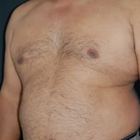
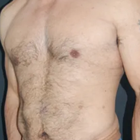
Front view
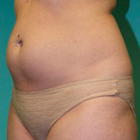
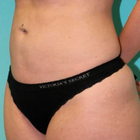
Half-side view
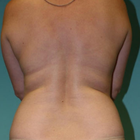
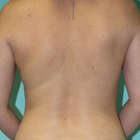
Full-side view
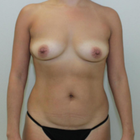

Front view
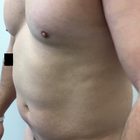
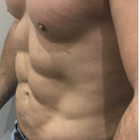
Half-side view
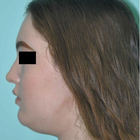
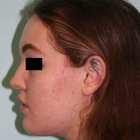
Full-side view
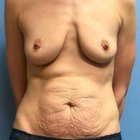

Front view
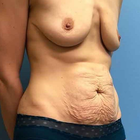

Half-side view
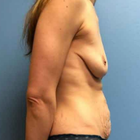

Full-side view
WHY US?
At Medijump, we're making medical easy. You can search, compare, discuss, and book your medical all in one place. We open the door to the best medical providers worldwide, saving you time and energy along the way, and it's all for FREE, no hidden fees, and no price markups guaranteed. So what are you waiting for?

Free

Best Price

Widest Selection

Risk-Free
What you need to know about Liposuction in Spain?

Liposuction is a cosmetic surgery that “sucks” out fat from areas that are hard to lose through a healthy diet and exercise, while liposculpture is the shaping of the skin back to its desired shape. Both are done in conjunction with one another at the same time. Most areas can be treated. Traditionally the most popular areas to treat are the stomach/abdomen, chin and neck, love handles, arms, and inner and outer thighs. Becoming more popular are the knees, calves and ankles, all with very successful results.
While liposuction can permanently remove fat cells and alter your body shape, it should not be viewed as a quick fix for individuals who are significantly overweight. The procedure works best for those who have already lost some weight themselves and are close to their ideal weight but need help tackling stubborn areas of fat in problem areas.
What is the cost of Liposuction in Spain?
When you're thinking about liposuction in Spain, one of the first things you probably wonder about is the cost. Here's the thing: the price isn't the same for everyone. It hinges on a few details like how many parts of your body you’re getting treated, how complex the treatment is, and the professional fee of your doctor. Costs for anaesthesia and the use of the surgical facility are also added to the bill. It's vital to remember, too, that because liposuction is often carried out for aesthetic reasons, normal health insurance might not cover it.
Can Liposuction be used as a weight-loss method?
Unwanted fats are very hard to get rid of especially if you are not a fan of exercise or diet. Liposuction, also known as Lipoplasty, liposculpture suction, lipectomy or simply lipo, basically eliminates unwanted fats by suctioning it away. Despite the growing trend of non-invasive fat reduction treatments, liposuction is still the leading procedure to remove stubborn fat cells.
Liposuction permanently removes fat cells and enhances the shape of your body. A plastic or dermatologic surgeon usually performs this type of procedure on the patient’s belly, hips, thighs, buttocks, arms, back or face to improve their shape. Furthermore, liposuction can be done together with other plastic surgeries such as facelifts, breast reductions, and tummy tucks.
This treatment procedure is particularly used for aesthetics, mainly to improve a person’s appearance. In most cases, maintaining and achieving such positive results will depend on your lifestyle.
What does a Liposuction Procedure Involve?
Before you have the treatment, a series of tests are required to ensure if you are fit for the surgery. You will also need to sign a consent form to confirm that you are fully aware of the risks, benefits and possible alternatives to the procedure.
You will likely be put under using general anesthesia, which can last for 1 to 4 hours. An epidural can also be used for procedures on the lower part of the body, although this is becoming increasingly unpopular now. Alternatively, you may be given local anesthesia if the procedure will be on small areas of your body. You may be asked to stand up during the procedure to ensure proper fat removal, but you will not feel any pain.
Tiny incisions will be made in the areas of interest through which a cannula can fit. This thin tube-like device is connected to a vacuum, capable of suctioning the fat from within your body. There are a few common techniques used, including Laser-Assisted or SmartLipo, UAL (Ultrasound-Assisted Lipo) or the most popular technique, Tumescent Lipo - this involves the pre-injection of a saline solution to help separate the fat from the blood, so less blood is removed. You'll discuss the best option with your surgeon before confirming what type of Liposuction is best for you.
How Long Should I Stay in Spain for a Liposuction Procedure?
Generally, patients who have received general anesthesia will be required to spend the night in the hospital (in-patient). Patients, who have had local anesthesia, may be able to leave the hospital on the same day.
After the operation, you will have to wear support bandages (support corset, bandages or elasticated support) whilst healing. Expect some pain, swelling and bruising during the following days and weeks. Your surgeon will prescribe medication to help control your pain and antibiotics to reduce the risk of infection. Furthermore, your stitches may be removed during your follow-up appointment with your surgeon. You should expect to stay in Spain for about a week post-op to allow for the initial recovery and check-up appointments, which will include the removal of stitches.
What's the Recovery Time for Liposuction Procedures?
Numbness in the specific area of your body where the fat was removed is to be expected for the first couple of weeks, usually, this will improve after 6 to 8 weeks. You may also need to wait a few days before going back to work. As for your normal activities, especially exercise, you may have to wait a few weeks before resuming.
Overall, the recovery time may vary from patient to patient. In most cases, patients can return to light activities within 2 to 3 days and are also able to go back to work after two weeks. As for the results, you may see visible results after 3 to 4 weeks, however, it can take several months before you see the final outcome.
What sort of Aftercare is Required for Liposuction Procedures in Spain?
Just like any other cosmetic surgery, following your surgeon’s aftercare instructions is vital in achieving and maintaining the best results. If the procedure was done above your waistline, you may be advised to sleep propped on pillows to have elevation on the specific area. This helps drain the fluids and prevent them from pooling. Furthermore, applying cold compress on a certain area where the procedure was performed is highly recommended, this will reduce inflammation and bruising especially during the first few days.
What's the Success Rate of Liposuction Procedures in Spain?
Liposuction remains one of the most popular cosmetic surgeries with a success rate of 85%, offering patients the enhanced body shape they've been craving. However, just like any other surgeries, it also comes with possible risks. Complications vary and are dependent on the procedure is as well as your surgeon’s skills. Possible risks and complications include:
- Severe bruising
- Inflammation
- Blood clot forms in veins, causing inflammation and complications (Thrombophlebitis)
- Kidney or Heart problems - changes in the body's fluid levels during the procedure may cause kidney or heart problems.
- Pulmonary embolism - when fat gets into your blood vessels and travels to your lungs, eventually, blocking your lungs.
Are there Alternatives to Liposuction Procedures in Spain?
CoolSculpting – is a fat freezing liposuction alternative. This is more suited to people who are close to their target weight but still have unwanted pockets of fat. Coolsculpting is a fat-freezing procedure that crystalizes your fat cells until they break apart painlessly.
Ultrashape - a non-invasive procedure that doesn’t require the need for anesthesia. This treatment procedure will make use of a body sculpting device that vaporizes fat cells within the targeted area with waves of ultrasound energy. Fat cells are permanently flushed out of your body, giving you a more natural-looking fat loss.
How does Liposuction differ from CoolSculpting and Vaser liposuction in terms of technique?
Liposuction vs Vaser Liposuction
Like traditional liposuction, the purpose of Vaser liposuction is to change the contours and shape of the body by removing persistent fat deposits. The word Vaser is actually an acronym for Vibration Amplification of Sound Energy at Resonance. This specialized ultrasound technology breaks down the fatty tissues using ultrasonic frequency waves, which is why it's often referred to as Ultrasonic Liposuction or Ultrasound Liposuction.
Liposuction vs CoolSculpting
CoolSculpting is the new non-invasive, freezing method used to also change the body contours and shape, however, this method does not require the use of a cannula so there is no damage to the overlying skin. Instead, it involves the controlled application of cooling localized fat deposits, which are then expelled from the body through the kidneys.
How safe is Liposuction in Spain?
Liposuction, when performed in Spain by a qualified and experienced plastic surgeon, is generally considered safe. The procedure has evolved significantly since its introduction, with advancements in technology and techniques contributing to its safety profile. Most liposuction procedures are performed without major complications, and patient satisfaction rates are high. However, as with any surgery, there is always an inherent risk.
It's crucial to have a detailed discussion with your surgeon regarding the safety of the procedure. The surgeon should be open about potential risks and complications, and explain how they would handle them should they arise. Factors such as your overall health, medical history and the area or the amount of fat being removed can influence the risks associated with liposuction.
What Should You Expect Before and After a Liposuction?
After your surgery, expect some swelling and discolouration in the areas where the fat was removed. To assist in healing and lessen swelling, you'll be given a snug garment to don. It is advisable to arrange for someone to take you home after the surgery and be with you for the initial day after the procedure. Though some changes will be noticeable soon after the surgery, the best results will take shape once the swelling has fully dissipated, which usually takes around 3-6 months. Regular check-ins with your surgeon are vital to ensure your recovery is progressing as expected.
As the wise saying goes, "Your waistline is your lifeline." Liposuction does remove fat cells for good, but weight gain post-procedure can cause the leftover fat cells to grow, potentially in different areas of your body. Therefore, a balanced diet and regular exercise are crucial for maintaining your new silhouette.
How Can I Prepare for Liposuction in Spain?
Prepping for a liposuction surgery in Spain? You've got this! Here are some absolutely essential steps you should follow for a smooth and successful procedure:
- Consultation: First things first. Have an in-depth consultation with your plastic surgeon. They'll assess your health status and discuss your goals. Taking this information into account, they'll provide some key instructions for you leading up to the surgery day.
- Healthy Lifestyle: In preparation for the procedure, it's of utmost importance to maintain a healthy lifestyle. Get in regular exercise. Eat balanced meals. Hydrate frequently. If you smoke, now is the time to quit. And hold off on alcohol. Your body will be on the fast track to healing, thanks to these healthy habits.
- Follow Instructions: Your surgeon will give you a set of preoperative instructions. Avoiding certain medications or supplements might be on the list. Stick to these guidelines religiously.
- Support Person: And lastly, on surgery day, make sure to have a trusted friend or relative by your side. Once the procedure is completed, you'll need a safe ride back home.
Whilst the information presented here has been accurately sourced and verified by a medical professional for its accuracy, it is still advised to consult with your doctor before pursuing a medical treatment at one of the listed medical providers
No Time?
Tell us what you're looking for and we'll reachout to the top clinics all at once
Enquire Now

Similar Procedures in Spain
Prices Start From $31

Prices Start From $120

Prices Start From $120

Prices Start From $120

Prices Start From $120

Prices Start From $31

Prices Start From $120

Popular Procedures in Spain
Prices Start From $111

Prices Start From $931

Prices Start From $76

Prices Start From $236

Recommended Medical Centers in Spain for Liposuction

- Interpreter services
- Translation service
- Religious facilities
- Medical records transfer
- Medical travel insurance
- Health insurance coordination
- TV in the room
- Safe in the room
- Phone in the room
- Private rooms for patients available

- Interpreter services
- Translation service
- Religious facilities
- Medical records transfer
- Medical travel insurance
- Health insurance coordination
- TV in the room
- Safe in the room
- Phone in the room
- Private rooms for patients available

- Interpreter services
- Translation service
- Religious facilities
- Medical records transfer
- Medical travel insurance
- Health insurance coordination
- TV in the room
- Safe in the room
- Phone in the room
- Private rooms for patients available

- Interpreter services
- Translation service
- Religious facilities
- Medical records transfer
- Medical travel insurance
- Health insurance coordination
- TV in the room
- Safe in the room
- Phone in the room
- Private rooms for patients available

- Interpreter services
- Translation service
- Religious facilities
- Medical records transfer
- Medical travel insurance
- Health insurance coordination
- TV in the room
- Safe in the room
- Phone in the room
- Private rooms for patients available

- Interpreter services
- Translation service
- Religious facilities
- Medical records transfer
- Medical travel insurance
- Health insurance coordination
- TV in the room
- Safe in the room
- Phone in the room
- Private rooms for patients available

- Interpreter services
- Translation service
- Religious facilities
- Medical records transfer
- Medical travel insurance
- Health insurance coordination
- TV in the room
- Safe in the room
- Phone in the room
- Private rooms for patients available

- Interpreter services
- Translation service
- Religious facilities
- Medical records transfer
- Medical travel insurance
- Health insurance coordination
- TV in the room
- Safe in the room
- Phone in the room
- Private rooms for patients available

- Interpreter services
- Translation service
- Religious facilities
- Medical records transfer
- Medical travel insurance
- Health insurance coordination
- TV in the room
- Safe in the room
- Phone in the room
- Private rooms for patients available

- Interpreter services
- Translation service
- Religious facilities
- Medical records transfer
- Medical travel insurance
- Health insurance coordination
- TV in the room
- Safe in the room
- Phone in the room
- Private rooms for patients available
Liposuction in and around Spain
About Spain
Historic Spain is home to the third-highest number of UNESCO World Heritage Sites, after Italy and China. Part of the Iberian Peninsula, along with Portugal, Spain also shares borders with France and the less well-known, Andorra. The country itself is made up of several regions, both on the mainland and out at sea, with the Canary Islands closer to Morocco than Spain - they are located in the Atlantic Ocean, whilst the Balearic Islands are a little closer to home, in the Mediterranean Sea. On the mainland there is Central Spain, home to the capital, Madrid, Catalonia in the East, home to the second city, Barcelona, and the Basque Country in the North, to name but a few.
Spain sees an estimated 100,000 medical tourists each year, many of which travel for Liposuction procedures. The biggest target market is from the UK, accounting for one in four of Spain's 60m annual tourists. An excellent healthcare system combined with warm temperatures and competitive prices means that Spain is now one of the more popular destinations in Europe for medical tourism. The most popular procedures tend to be cosmetic surgery, fertility treatments, bariatric surgery, cardiac surgery, orthopedics, urology, and bone marrow transplants.
Popular Parts of Spain
Spain has diverse landscapes, dynamic cities, influential art, and delightful food.
- Madrid is the capital of Spain. Modern infrastructure and historic neighborhoods blend nicely in the city. Known for its glorious fashion, food, and nightlife, the city has a lively spirit. Rest in El Retiro Park under the sun or take a guided tour in Palacio Real. Tourists who love sports can watch a Real Madrid soccer match.
- Barcelona has a plethora of attractive architecture, unique food beautiful beaches, and a vibrant nightlife. It is the most popular tourist destinations in the country. Visit Picasso Museum, Enjoy Gaudi’s Architecture the church of the Sagrada Família, or visit the Barcelona History Museum and enjoy the beach.
- Valencia is Spain’s third-largest city. The city is filled with an array of art nouveau buildings as well as Gothic and Renaissance monuments. Try all the food that the city offers, especially the famous paella. Be inspired by the stunning Cuidad de las Artes y las Ciencias, a massive building in the old Turia riverbed.
- Palma de Mallorca is a very welcoming city for international tourists. It has a number of historical attractions, Gothic churches, and the beautiful Mediterranean Sea at its feet. Shopping and gastronomic scenes are two of the best things in the city. Tourists can relax in the seafront cafés after a long day.
- Seville is a stunning artistic, cultural, and financial capital of southern Spain. Being a big university town, it has a very youthful vibe everywhere. Spend a day exploring Parque de Maria Luisa, tour Casa de Pilatos, get lost in the maze of Jewish Quarter’s small streets, and discover what the town has to offer on a bike.
- Ibiza is known to have some of the best nightclubs in the world. It is a beautiful island with dozens of amazing things to discover.
Weather and Climate in Spain
Spain has wonderful weather all year-round. Summer starts from June to August and tends to be nice. Tourists can expect warm and sunny weather. The temperature can get as high as 30 °C, sometimes even higher. Summer is the peak season for tourism so prices can increase by up to 50%.
Spring (April to May) and Autumn (September to October) are great times to visit. The weather is mild and perfect to do outdoor activities, although sometimes it can be unpredictable. The country is not as crowded as during summertime.
Winter in Spain is cold but the temperature does not drop too low. The average temperature is between 4 °C to 10 °C. Northern Spain and the mountainous areas sometimes experience snowfall and rain showers.
Getting Around in Spain
The main international airport in Spain is Adolfo Suárez Madrid-Barajas and Barcelona El Prat Airport. Madrid-Barajas is the largest airport in the country. It operates domestic and international flights. The airport connects Madrid with almost every country in the world. It serves several budget airlines such as Iberia Express, Ryanair, and EasyJet. It is the hub for Air Europa and Iberia.
Barcelona El Prat Airport also serves domestic and international connections with almost every country globally. Budget airlines such as Ryanair and WestJet operate flights from this airport. It is the hub for Level and Vueling.
To get to the city center, both airports provide taxis, buses, and metro. Taxis are the most convenient transportation mode but usually more expensive. Tourists who travel to Madrid are advised to buy the Madrid Tourist Travel Pass which can be used on any Metro, bus, or suburban train for just 5 EUR.
Spain has a well-designed public transportation network. Tourists can get around Spain by train. There are high-speed (AVE) and regular service trains (Talgo) for long-distance or medium distance travel, the fares are based on a 1st and 2nd class system. For short destinations, tourists can use local trains. It offers one class of seats and makes a lot of stops. 60-year-old and older travelers can get a discount between 25 to 40 percent for train tickets. Children under the age of 13 also qualified for discounts. Buses are another excellent option. Intercity buses are affordable, clean, and safe.
Renting a car gives more flexibility for tourists. International car rental agencies are widely available in the country. The highway system is easy for foreigners to follow. Parking can be quite hard in some cities and historic towns because it can get really crowded.
Taxis have a reasonable price. Spanish taxi drivers are usually trustworthy and don’t cheat. The taxi can be hailed on the street or from a taxi stand (parade de taxi). Available taxis have green lights or signs that say “libre” on them. Taxis run on meters, but if you’re traveling a long distance, you will have to agree on the fare in advance.
Tourist Visas in Spain
Citizens of the European Union, Norway, Liechtenstein, Iceland, and Switzerland can travel to Spain with their identity cards only. Citizens of Australia, Canada, Israel, Japan, the United States, and New Zealand are granted visa-free entry and can stay for up to 90 days. Other countries can check with their nearest Spanish embassy or consulate. Spain is a member of the Schengen Convention. If you hold a Schengen visa, you cannot extend it.
Additional Information
- Local Currency: the official currency is the euro (EUR). 1 USD converts to 0.85 EUR.
- Money & Payments: ATMs are available. Tourists can withdraw money from ATMs that display the relevant symbols such as Visa and MasterCard with a charge of 1.5% to 2%. Credit and debit cards can be used for most purchases, tourists will often be asked to show a passport. Tipping is optional, tourists can leave small change or up to 5% tip in restaurants.
- Local Language: the official language is Spanish. People in major tourist cities speak good English; it is also widely spoken in coastal resorts.
- Local Culture and Religion: The largest religion in the country is Catholic Christianity with 67.5% of the population follows the religion. There are small groups of Muslims, Jews, Buddhists, Hindus, Pagans, Taoists, and Bahá'ís.
- Public Holidays: Spain celebrates Christian holidays. Known as the country of fiestas and festivals, numerous festivals such as The Holy Week, La Tomatina, and The Fallas of Valencia are hosted annually.
Popular Searches
- Plastic Surgery in Thailand
- Dental Implants in Thailand
- Hair Transplant in Thailand
- Breast Augmentation Thailand
- Gastric Sleeve in Thailand
- Gender Reassignment Surgery in Thailand
- Laser Hair Removal in Bangkok
- Botox in Bangkok
- Dermatology in Bangkok
- Breast Augmentation in Bangkok
- Coolsculpting in Bangkok
- Veneers in Turkey
- Hair Transplant in Turkey
- Rhinoplasty in Turkey
- Stem Cell Therapy in Mexico
- Rhinoplasty in Mexico
- Liposuction in Mexico
- Coolsculpting in Tijuana
- Rhinoplasty in Korea
- Scar Removal in Korea
- Gastric Sleeve in Turkey
- Bone Marrow Transplant in India
- Invisalign in Malaysia
- Plastic Surgery in the Dominican Republic
- Tummy Tuck in the Dominican Republic
- Plastic and Cosmetic Surgery in Poland
- Rhinoplasty in Poland
- Hair Implant in Poland
- Dental Implants in Poland
- IVF in Turkey



















